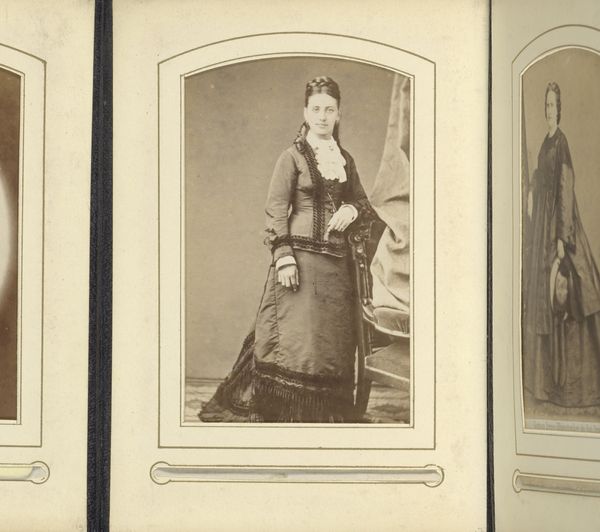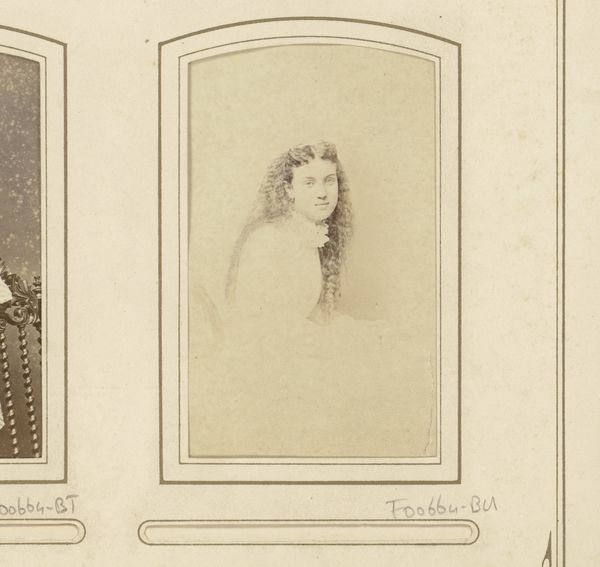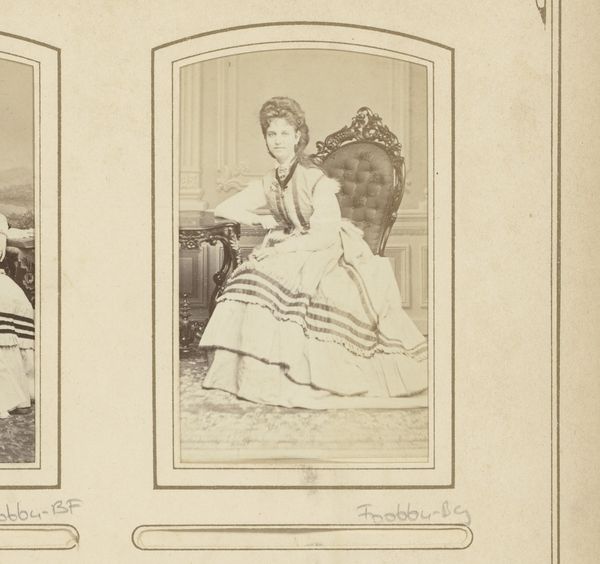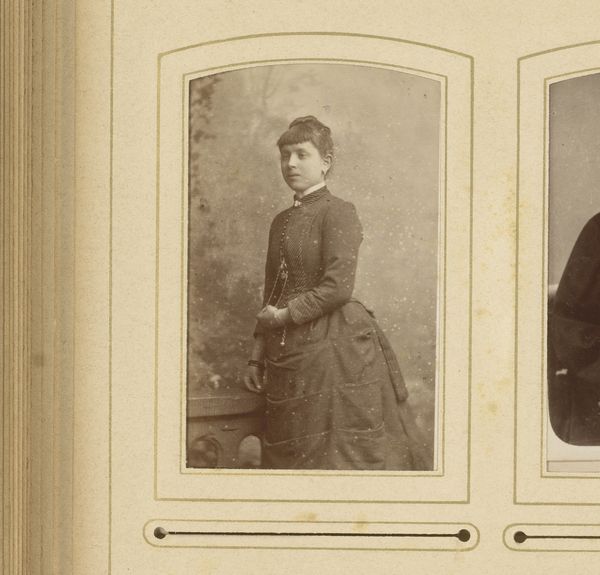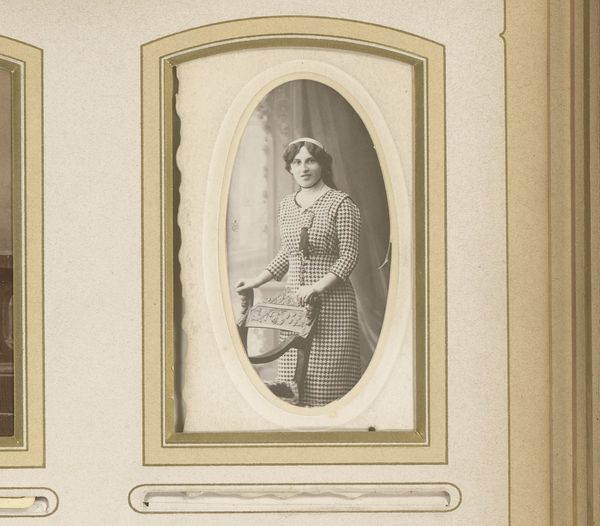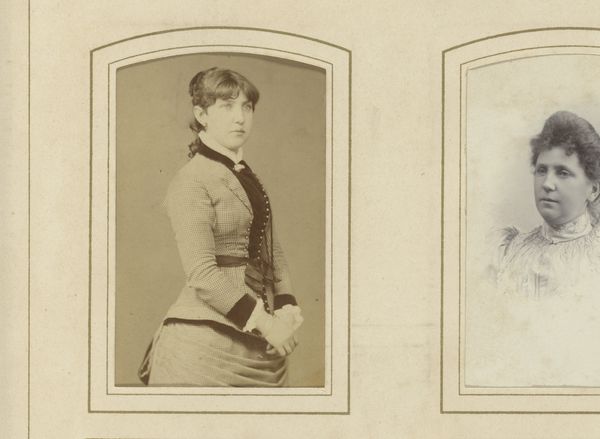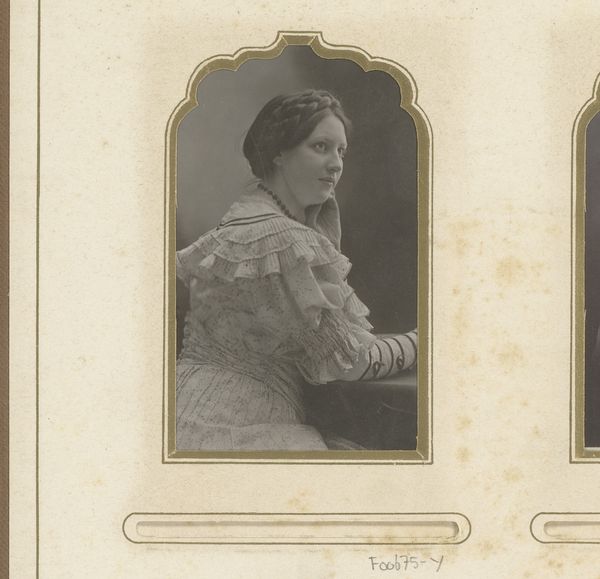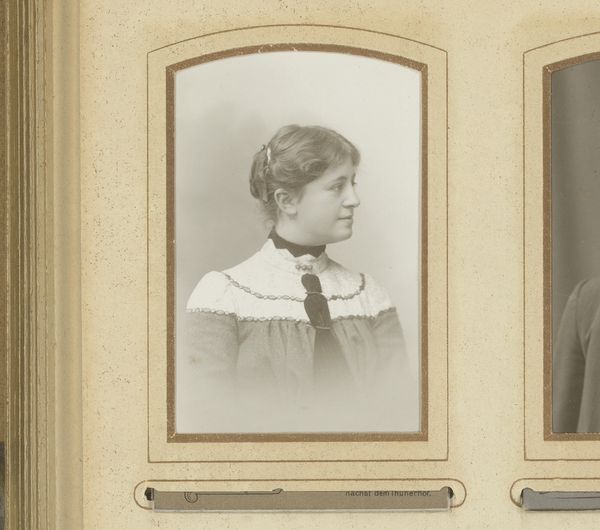
photography
#
portrait
#
dog
#
landscape
#
photography
#
historical photography
#
19th century
#
genre-painting
Dimensions: height 85 mm, width 52 mm
Copyright: Rijks Museum: Open Domain
Editor: Here we have "Portret van een vrouw met attributen en hond," which translates to "Portrait of a woman with attributes and dog," created sometime between 1860 and 1880 by C.B. Button. It's a photograph, and I find the subject's serious gaze quite striking. It feels very posed, very formal. What do you see in this piece, looking at it from a historical perspective? Curator: Indeed. Considering the time it was made, the photograph speaks volumes about the burgeoning middle class and their aspiration to be seen in a particular light. Photography at this time was becoming more accessible but was still a deliberate act of self-representation. Notice the inclusion of the dog, likely a prized possession and a symbol of status, much like the landscape visible through the window behind her. What does her dress tell you? Editor: Well, it looks very elegant, dark in color, probably expensive… It seems that through dress and props, this woman sought to present a certain image of herself, but what does that mean? What did they wish to express about their position in society? Curator: Exactly. This era saw a shift in the way individuals presented themselves publicly. As social mobility increased, so did the desire to emulate aristocratic ideals. This photograph serves as evidence of a calculated performance, where every detail, from the dog to her dress to the posture, was carefully orchestrated. The rise of photography allowed for the democratization of portraiture. So this, I would argue, wasn't just a family record; it was a statement. Does that resonate with you? Editor: Absolutely! Seeing it as a conscious statement of social standing makes it so much richer than just a simple portrait. It’s like she’s performing a role for the camera, for posterity. Curator: Precisely. And that performative aspect speaks volumes about the societal pressures and aspirations of the time. It reveals not just an individual, but the cultural milieu in which she existed. Editor: I will definitely look at nineteenth-century portraiture with different eyes now. Thanks so much!
Comments
No comments
Be the first to comment and join the conversation on the ultimate creative platform.

